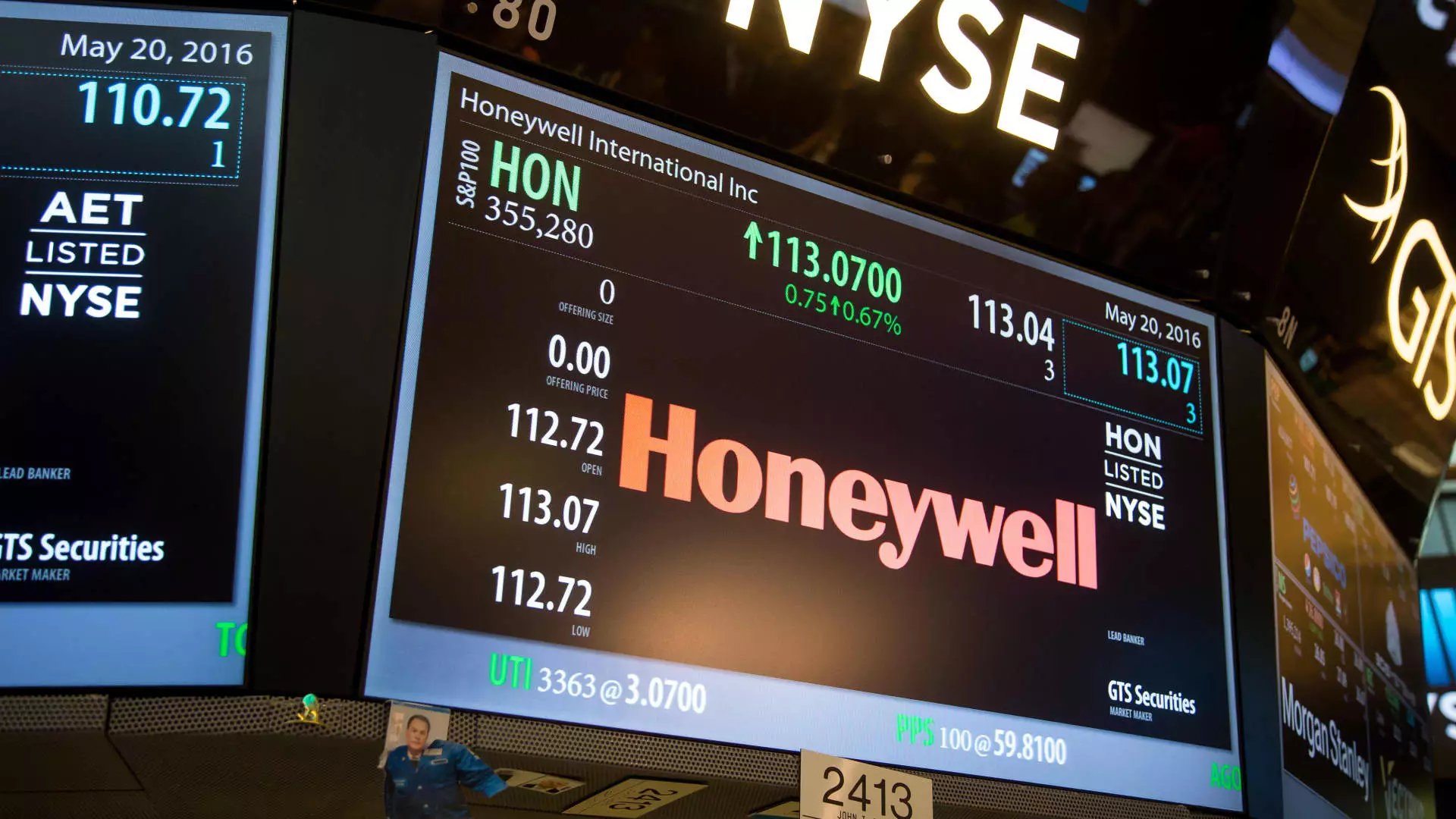In the world of industrial technology, few names resonate as strongly as Honeywell. Yet, the company’s latest quarterly results have reignited debates among investors and analysts alike. For the third quarter, which concluded on September 30, Honeywell reported a year-over-year revenue increase of 5.6% reaching $9.73 billion, albeit falling short of the anticipated $9.9 billion forecast compiled by LSEG. On the brighter side, the company showcased an 8.4% rise in adjusted earnings per share (EPS) to $2.58, beating expectations of $2.50 and surpassing the higher end of management’s earlier guidance. Despite this mixed performance, the reaction from the market was pronounced, with Honeywell’s shares plummeting by 4.5% immediately following the announcement. However, this drop might be providing discerning investors with an intriguing buying opportunity.
While Honeywell’s sales figures disappointed, the operational execution and commitment to cost management by the new CEO, Vimal Kapur, helped maintain a resilient profitability level. One aspect that stood out was the company’s cash flow generation, which remains a promising indicator for future financial health. Nonetheless, the company faced challenges that affected its projection for the remainder of the fiscal year, including delays in projects, slow recovery in short-cycle business operations, and ongoing supply chain hurdles.
Short-cycle businesses, which thrive on rapid order-to-delivery timelines, are particularly susceptible to economic fluctuations. This sector’s sluggish recovery has hindered Honeywell’s growth potential and prompted the management to readjust their outlook.
Honeywell’s Strategic Direction
Investors have long contemplated Honeywell’s expansive portfolio, which encompasses various industrial technology solutions. While the company’s exposure to the aerospace sector is commendable, the portfolio appears somewhat unwieldy. In order to capitalize on long-term value creation, Honeywell plans to streamline its focus, concentrating on three pivotal mega-trends: automation, sustainable aviation, and energy transition. This strategic pivot could ultimately lead to better performance and more robust growth.
The recent frustration among investors reflects a recurring theme: just as Honeywell seems poised for a significant breakthrough, unpredictability undermines its stock performance. However, the patterns of higher lows observed in its shares signal that there is a foundational strength developing within the company, even amid dynamic market conditions.
Despite the rough ride in Q3, there were glimmers of hope: Honeywell unveiled a book-to-bill ratio of 1.1, backed by a 2% organic growth in orders, resulting in a record backlog of $34 billion, which represents a 10% increase from a year prior. This robust backlog is crucial as it suggests strong future revenue potential, despite the current challenges.
Kapur emphasized the strategic acquisition of four entities: Carrier’s security division, Civitanavi, CAES Systems, and Air Products’ LNG operations. Collectively valued at approximately $9 billion, these acquisitions are expected to supplement Honeywell’s capabilities across major sectors. They could significantly enhance the company’s projected annual sales by around $2 billion, increasing operational efficiency and positioning Honeywell favorably in the market.
Additionally, Kapur shared plans to divest non-core assets, including the personal protective equipment business and advanced materials division, which may streamline operations and foster organic growth.
Market Reactions and Future Guidance
The aftermath of Honeywell’s earnings report was undoubtedly mixed. While Q4 projections revealed some weaknesses, particularly in sales figures, Honeywell managed to exceed EPS expectations at the midpoint, albeit this was buoyed by non-operational adjustments like pension income and tax factors. Investors, however, remain skeptical about these adjustments translating into sustained operational improvements.
Looking ahead, Honeywell has enabled guidance for 2024 across all operating segments while anticipating organic growth. The slight expansion of the segment margin to 23.6% in Q3, along with Kapur’s optimistic outlook for 2025, presents a foundation for cautious hope. The anticipated return to margin expansion combined with planned operational efficiencies and productivity-based strategies provides a positive narrative as Honeywell gears up for another transformative phase.
While Honeywell’s Q3 results were mixed, the strong leadership under Kapur, strategic acquisitions, and proactive management of non-core assets demonstrate a clear commitment to long-term success. Investors should approach this valuable industrial giant with timely caution, recognizing that the current stock price decline could yield a strategic investment opportunity as Honeywell positions itself within critical growth areas like automation, aerospace, and energy transition. As the market navigates turbulent waters, Honeywell remains a company to watch for those who seek growth amid challenges.

